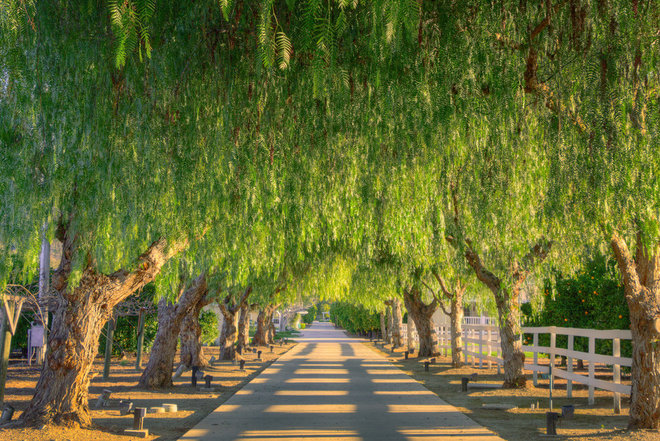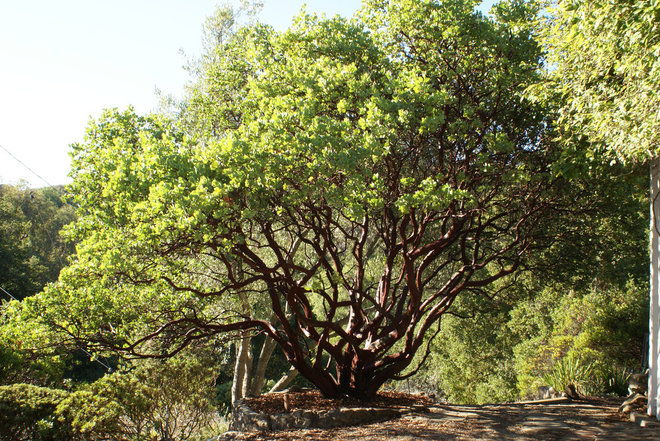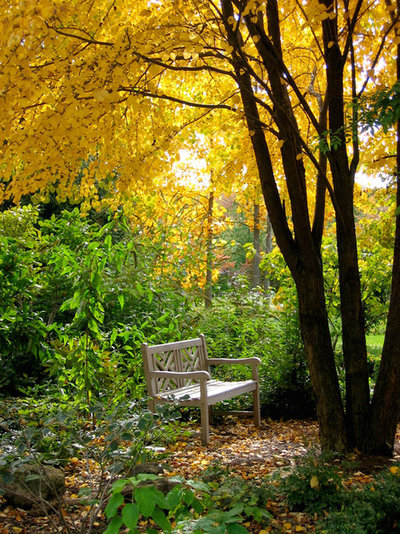
Mature trees are a valuable commodity in the yard because they take a long time to establish and then become gorgeous specimens that provide shade and year-round benefit to wildlife. Protecting them by keeping them in great health is an effective way to invest in the long-term look of your landscape. It’s easy to take mature trees for granted since they often do so well, and provide great beauty and enjoyment, without much help from us. And yet, intense weather events can take their toll. Follow these five steps to ensure that your trees are healthy, resilient, and will survive harsh wind, heavy rain and extended drought for generations.

How much water does the tree need and what type of soil does it prefer?
It’s important to know a tree’s preferred moisture conditions, even if it’s receiving enough water from rainfall alone. Ideally, the tree is planted in the right place and thriving in existing soil conditions. If you aren’t sure if your tree is sited correctly, get the advice of an arborist.
Is the tree drought-tolerant?
If not, keep a watchful eye on it during periods of drought and provide supplemental water as needed.
What is the tree sensitive to?
Some are sensitive to high winds, salt spray, drought, too much water or root competition from other plants. Know these sensitivities and avoid exposing the tree to those stressors.

Protect tree roots:
Healthy roots are essential for healthy trees, which means healthy soil is also critical. Oxygen is necessary for nutrient absorption by tree roots, which is why healthy soil has air space. Compacted soil is one of the biggest threats to tree roots because compaction impedes water infiltration and oxygen into the root zone.
Focus on protecting the roots and soil within the critical root zone of your tree. The CRZ is defined by the drip line of the tree, an imaginary circle drawn on the ground in line with where the tree’s branches extend. The reality is that tree roots extend well beyond the drip line, and roots below the ground aren’t symmetrical with the branches above the ground. However, the roots within the CRZ is the area most sensitive to disturbance. This means that you shouldn’t compact soil or change the grade of the soil within the CRZ of your tree. Doing so can significantly damage the roots and soil structure, which will degrade your tree’s health over time. This graphic from the North Carolina Urban Forest Counsel illustrates the CRZ for a tree.

Protect tree bark:
A tree’s bark is like a living armor that protects the tree. Damaging the armor makes it easy for fungal or bacterial infections to take hold and harm the tree by rotting from the inside. Sources of damage to bark include:
• Rotary spray heads.
Sprinkler heads that hit the tree’s trunk in the same place, especially at close range, may injure the bark. Redirect the spray arc of the spray head so that it doesn’t force a stream of water directly onto the trunk.
• Rubbing branches.
Branches that are entwined and rubbing against one another will cause a wound to the bark. See tip below on pruning out branches correctly.
• Lawn equipment. Has your tree been hit by the weed whacker? Steer the mower and all lawn equipment away from the trunks of trees.Vehicles. Trees near driveways and roads can sometimes suffer hits from tall delivery trucks or other vehicles. You can have lower limbs removed from trees in these areas to prevent breakage from vehicles, and use small reflectors from the hardware store to make tree trunks visible at night.

Water effectively:
Mature trees that are well-established will likely thrive in existing soil and moisture conditions. However, an extended drought can still kill them, depending on the species, soil conditions and local climate. This is why it’s important to ensure the overall health of your trees so that they’ll be more resilient when a stressful drought sets in. Your trees need no extra watering in the dormant winter season unless they’ve been recently planted. It’s in the heat of summer or during drought conditions that a tree needs to be irrigated. Infrequent, deep watering is the preferred schedule for trees. You want to give them a good soak occasionally, instead of a frequent misting. I recommend this with the caveat that droughts are when we should be conserving potable water instead of using a precious resource to keep our landscape lush. Maintain the health of your tree with healthy soil to give it the best chance of surviving a drought.

Prune properly:
The dormant winter season is a great time to prune trees before they push out any new growth in the spring. Look at the overall structure of your tree and select which branches need to be removed. For people with black thumbs or who are new to pruning, it’s a good idea to hire a professional who can teach you the proper techniques or can simply do the pruning for you. Here are the basic guidelines:
• Crossing branches.
Branches that are crossing and rubbing against one another can create a wound in the bark. Generally, remove the branch that’s smaller in diameter to encourage the stronger and more robust branch to grow. Multi-stemmed trees can also be pruned to open up and thin out their form.
• Dead and broken branches.
Remove them with a clean cut so that the tree will self-heal. Leaving dead or broken branches on the tree can create rough breaks where moisture and organisms will move in and degrade the tree.
• Low branches.
You can “limb up” your tree to remove low branches as necessary. Removing low branches is a way to allow for more light into the space below your tree and is mostly for aesthetic purposes. Remove any low branches that are prone to damage, such as those near a roadway that might be impacted by a vehicle.

Maintain healthy soil around trees:
In the forest, trees do just fine on their own without human care. A forest has an intact layer of decaying organic matter that regularly enriches the soil and creates a rich microbial environment that aids nutrient absorption by roots. The leaf litter layer also retains moisture in the soil and creates a good soil structure for water infiltration. There are two ways to mimic this process in your home landscape:
• Mulch around trees using purchased mulch or fallen leaves from your yard.
You need to maintain only a 2- to 4-inch layer; any additional depth will smother the roots. Make sure to stop the mulch away from the trunk and root flare.
• Plant ground covers and grasses that allow for dead plant material to decay in the soil.
You can plant shade-tolerant plants in the shade of a mature tree to act like a “living mulch.” The plants will help retain a healthy soil environment and can look much more attractive than bare mulch. Use plants with spreading roots to avoid root competition with the tree.
credit source : www.houzz.com


